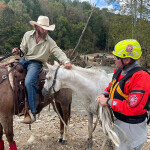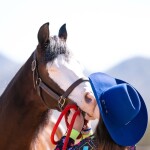Discover why fall pastures can be more dangerous than spring for horses with metabolic conditions. Learn how cool nights, sunny days, and seasonal regrowth cause grass sugar spikes that increase laminitis risk—and what management strategies keep horses safe.
As autumn arrives, many horse owners breathe a sigh of relief thinking the dangerous high-sugar period of spring growth has passed. However, fall presents its own unique challenges when it comes to grass sugar levels. Understanding these seasonal dynamics is crucial for protecting horses with metabolic conditions from potentially life-threatening laminitis episodes.
Cool-Season Grasses: Nature’s Sugar Storage System
Most pasture grasses in the United States are cool-season varieties, including orchardgrass, timothy, ryegrass, tall fescue, and Kentucky bluegrass. These grasses have evolved a remarkable survival strategy that can spell trouble for metabolic horses.
During fall, a perfect storm of environmental conditions triggers sugar accumulation. Shorter daylight hours signal to plants that winter is approaching, while cool nights and sunny days create ideal conditions for photosynthesis without rapid sugar consumption. As temperatures drop, plant growth naturally slows, but photosynthesis continues during warm, sunny days. This imbalance causes non-structural carbohydrates (NSCs) to build up in grass leaves rather than being used for growth.
Think of it like a factory that continues producing goods while slowing down shipping. The inventory piles up with nowhere to go.
The 24/7 Sugar Trap: Fall’s Daily Cycle
Summer grazing management often relies on the natural daily sugar cycle. Typically, grass sugars peak in late afternoon after a full day of photosynthesis, then drop overnight as plants use stored energy for growth and metabolism. This pattern traditionally made early morning the safest grazing time.
Fall changes this equation completely. While grasses still photosynthesize sugars throughout sunny days, the cool nighttime temperatures slow plant metabolism dramatically. Instead of burning through stored sugars overnight, plants conserve them. This means NSC levels that peak in the afternoon remain dangerously high through the night and into the following morning.
For horse owners, this eliminates the traditional “safe” early morning grazing window that many rely on during summer months.
Seasonal Sugar Spikes: When Risk Peaks
Fall sugar accumulation follows predictable patterns that alert horse owners should recognize:
Early Fall Flush (September-October): After late summer droughts break with autumn rains, grasses experience vigorous regrowth. Combined with cool nights and warm, sunny days, this creates lush pastures packed with sugars. This period often catches horse owners off guard because the grass looks healthy and abundant.
Late Fall Buildup (November): As growth slows even further while photosynthesis continues on sunny days, mature grass leaves accumulate increasingly high NSC levels. Even though growth appears minimal, sugar storage continues.
Post-Frost Danger: Hard frost events create particular risks, especially with grasses like sorghum, sudangrass, and Johnsongrass. These plants can experience dramatic spikes in fructans and other NSCs following frost damage, making them extremely dangerous for sensitive horses.
Managing Metabolic Horses in Fall
High NSC levels pose serious laminitis risks for horses with Equine Metabolic Syndrome (EMS), Pituitary Pars Intermedia Dysfunction (PPID, formerly called Cushing’s disease), or any history of founder. Fall’s consistently elevated sugar levels often make this season more dangerous than spring for metabolic horses.
Effective management strategies include:
Drylot turnout during high-risk periods, particularly during early fall flush
Soaked hay as a safer alternative to pasture access, as soaking removes water-soluble sugars
Grazing muzzles when turnout is necessary, though these should be used cautiously and horses monitored closely
Strategic timing of any pasture access during overcast, cool days when photosynthesis is reduced
Species-Specific Sugar Profiles
Not all grasses pose equal risks. Understanding species differences helps inform pasture management decisions:
Ryegrass typically runs highest in sugar content, making it particularly risky for metabolic horses. Orchardgrass and timothy carry moderate to high sugar levels during fall conditions. Tall fescue generally contains moderate NSC levels, but stockpiled fescue maintained for late fall grazing can still accumulate dangerous sugar concentrations.
Legumes like clovers and alfalfa generally contain lower NSC levels than grasses, but they’re not “low-carb” options and can still pose risks for highly sensitive horses.
The Bottom Line
Fall’s combination of cool, sunny days and cold nights creates consistently high grass sugar levels, making it a particularly dangerous season for metabolic horses. Unlike summer, there’s often no safe morning grazing window when sugars naturally drop.
Horse owners must remain vigilant throughout autumn, understanding that lush, healthy-looking fall pastures can harbor hidden dangers. Proactive management, including restricted grazing and alternative forage sources, becomes essential for protecting vulnerable horses during this deceptively risky season.
FAQs: Fall Grass Sugar Dynamics and Horse Health
Q1: Why are grass sugar levels higher in fall than summer?
A: Cool nights slow plant metabolism, while sunny days fuel photosynthesis. This creates excess non-structural carbohydrates (NSCs) that accumulate in grass leaves instead of being used for growth.
Q2: Is early morning grazing safe for horses in fall?
A: No. Unlike summer, fall grass sugar levels remain high overnight due to reduced nighttime metabolism. There’s often no “safe” morning grazing window in autumn.
Q3: Which grasses are highest in sugar during fall?
A: Ryegrass carries the highest risk, followed by orchardgrass and timothy. Tall fescue and stockpiled pastures can also accumulate dangerous sugar levels.
Q4: How can I safely manage a horse with EMS or Cushing’s in fall?
A: Use drylot turnout, feed soaked hay to reduce sugar intake, consider grazing muzzles cautiously, and restrict pasture access during high-risk conditions.
Q5: Why is frost especially dangerous for horses on pasture?
A: After a hard frost, grasses like sorghum, sudangrass, and Johnsongrass experience sugar spikes that can trigger laminitis in sensitive horses.
Read More:








